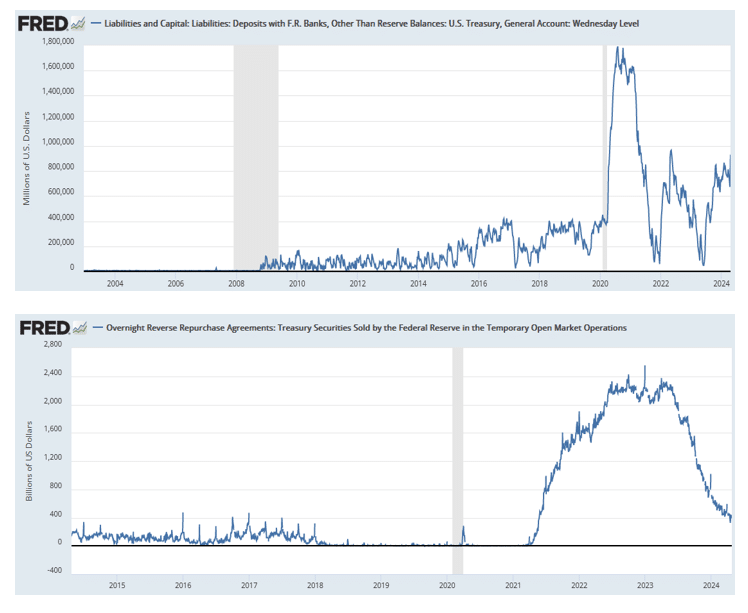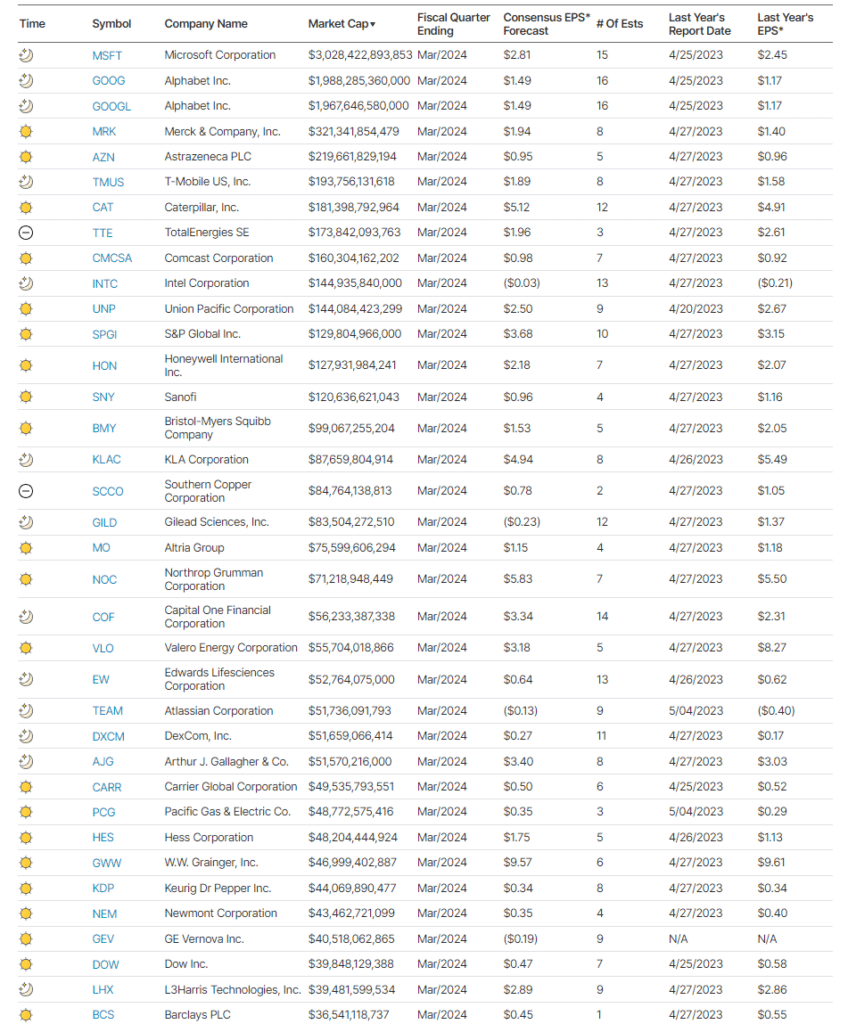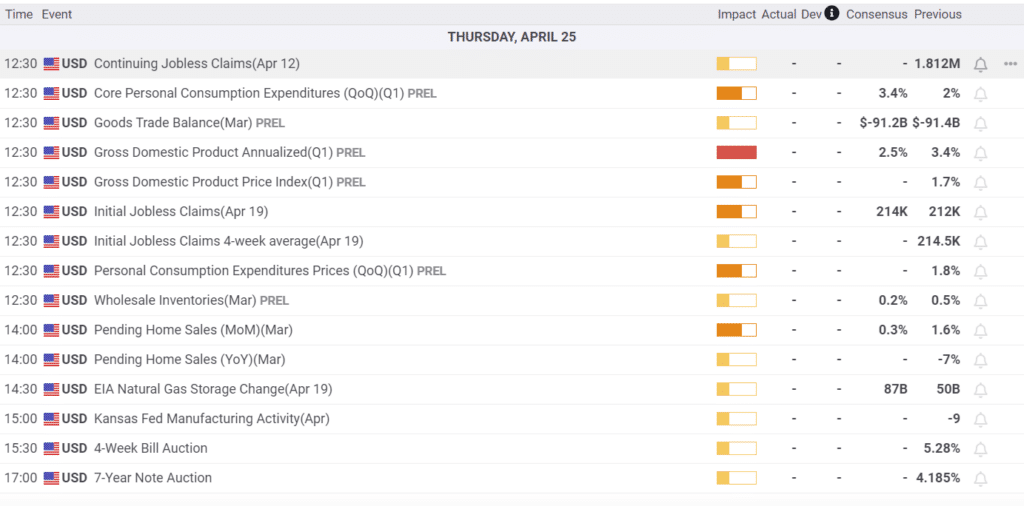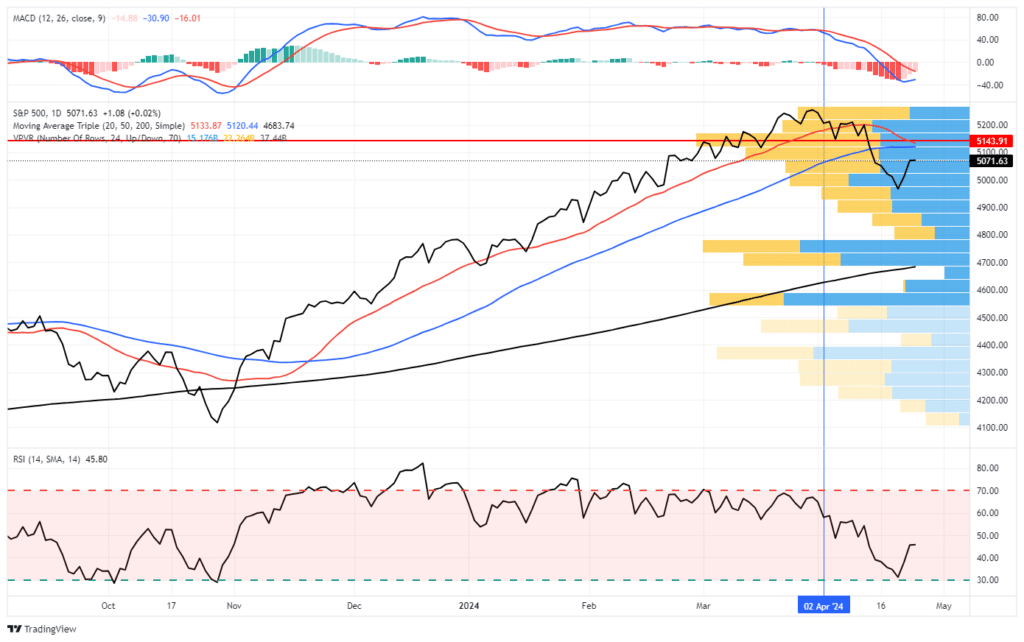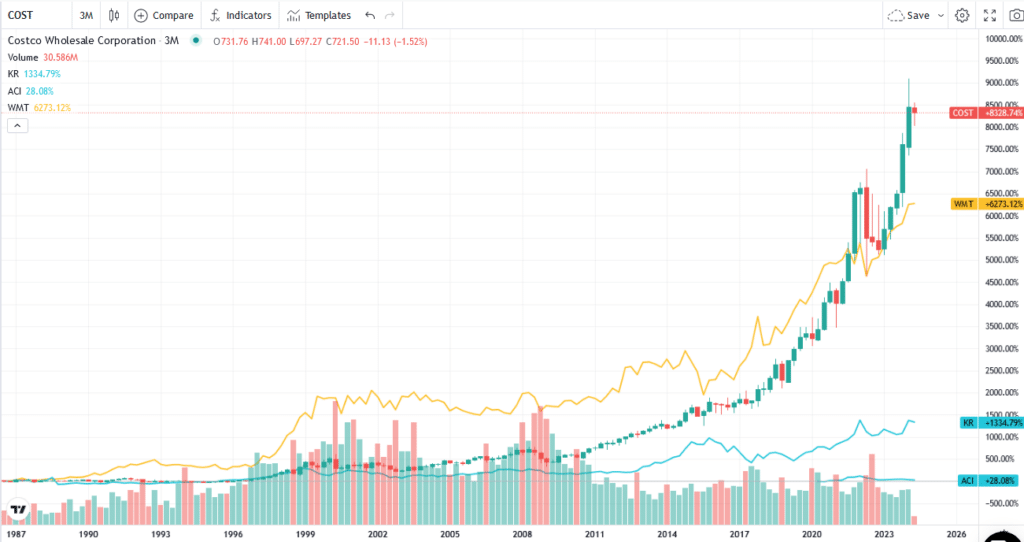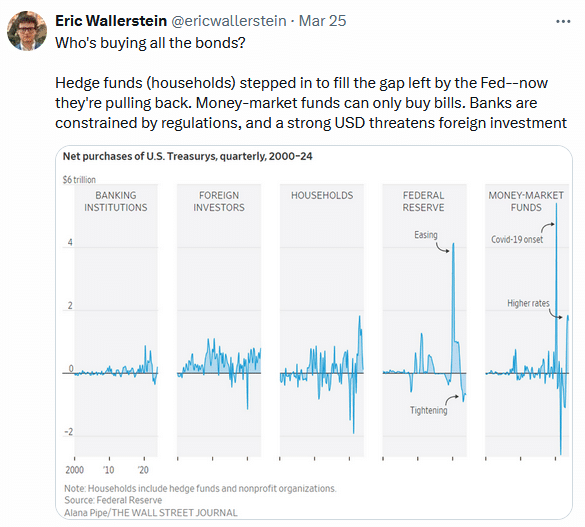The U.S. Treasury now has $930 billion in cash in its Treasury General Account (TGA) held at the Federal Reserve. The influx of cash into the Treasury account at the Fed is the result of April 15 tax payments. As shown in the top graph, this is the third highest level it has been and is still increasing. So you are probably asking why I should care. For starters, the surplus of cash means the Treasury can draw from the funds in its Fed account and, therefore, issue fewer Treasury bills, notes, and bonds. For context, in its latest borrowing estimate, the Treasury expects to borrow $202 billion between April and June. That is well below their expectations of $760 billion for the first quarter.
The importance of issuing fewer securities is that it should provide a temporary boost to liquidity. Our best gauge of excess liquidity is the Fed’s Reverse Repurchase Program (RRP), shown in the lower graph. At its peak, RRP was over $2.4 trillion. However, it dipped below $400 million as the excess liquidity is rapidly leaving the system. Further, excess liquidity fell at a quicker pace into the April 15 tax payment date as investors withdrew cash from money markets to pay their taxes. Now, the money sits in the TGA, and the liquidity will essentially return as the Treasury issues fewer securities. Consequently, this should stall the decline in the RRP for a couple of months. However, come June or July, the RRP will likely start declining, and with it, we should be on alert for new liquidity problems, barring any actions from the Fed between now and then.
What To Watch
Earnings
Economy
Market Trading Update
As noted yesterday, the market is in a reflexive rally, likely limited to initial resistance at the 50-DMA. However, as noted, there isn’t significant buying volume until between 4700-4800, which coincides with a retest of the 200-DMA. While the market did sell off some yesterday morning, we saw buying in the late afternoon to bring the market back to even. However, Meta (META) missed earnings after the close and will likely add some selling pressure to the market today. If the market can shrug off the impact of META and rally, then this rally likely still has some life left in it. However, I suspect we are getting closer to the end of this initial reflex, and we will likely see some further liquidation before the next buying opportunity arrives. Tread cautiously for the moment.
Tonight’s NFL Draft Speaks Teaches Us About Investor Behaviors
Tonight, the NFL will hold its annual draft. Especially notable in this draft is that four quarterbacks are likely to go in the top five picks. The GMs selecting these quarterbacks must be very confident they have the ability to draft a top-ten NFL quarterback. While many experts say this quarterback class is a sure thing, history shows that first-round quarterbacks are often busts. Not only are GMs overconfident in their selection abilities, but they suffer from groupthink. It turns out first first-round quarterbacks selected since 2011 have produced a sub-500 win/loss record.
As we share in our latest article, Overconfidence in NFL Drafts: A Lesson For Investors, investor traits are similar to those of NFL GMs. Per the article:
We quantified the odds of GMs picking above-average quarterbacks earlier. Per DFA Funds, the odds of an investor outperforming the market are even more daunting.
We saw from the data above that an investor has about a 75% chance of underperforming the market in any given year, which means you have a 25% chance of beating the market in any given year.
The message to take away from that statistic is to leave your confidence at the door!
In addition to pointing out similar traits to help you appreciate your investment biases, we also share some tools to combat as follows:
- Zig, while others zag
- Take profits
- You have options
- Let winners run
- “Most importantly, remember that you are only human. The Patrick Mahomes of the investment world are few and far between. At times, overconfidence is a good trait, but it can also be a critical flaw.“
Costco’s Biggest Loss Leader Is A Winner
In 2023, Costco sold 137 million rotisserie chickens and 156 million hot dog combos. The prices, $4.99 for the chicken and $1.50 for the hot dog combo have remained the same for over 25 years. Therefore, you might be asking how they profited from this. They don’t. In fact, last year, they lost over $50 million on rotisserie chickens.
Costco uses chickens and hot dogs as loss leaders. In addition, the company spends significant effort and dollars quantifying its sales, margins, and returns. In the case of chickens, they can determine how receipts containing a chicken led to other sales and contributed to its return on investment. The chart below shows Costco’s (COST) stock, handily beating the top two grocery chains (Krogers and Albertsons) and Walmart.
Tweet of the Day
“Want to achieve better long-term success in managing your portfolio? Here are our 15-trading rules for managing market risks.”



